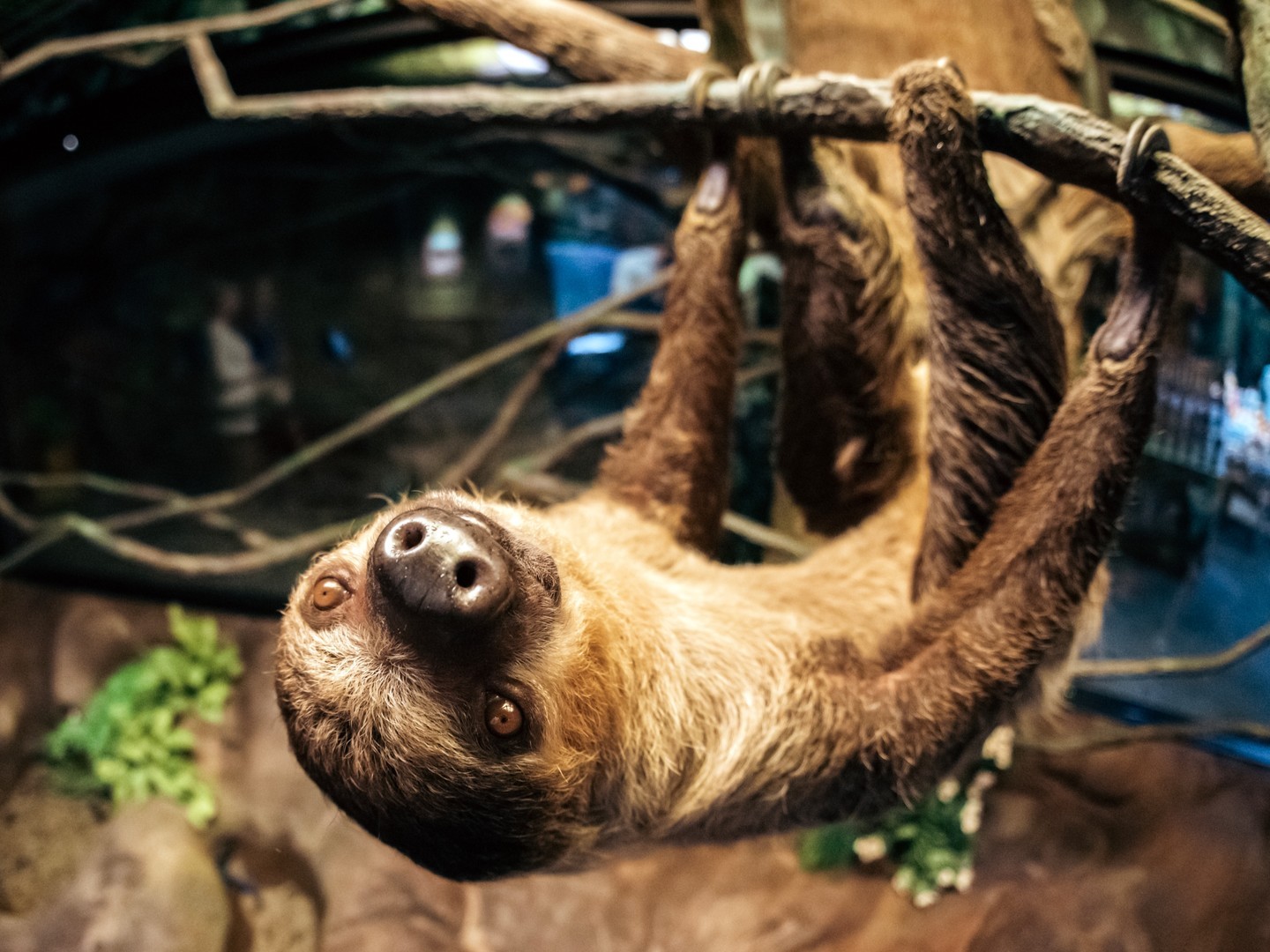- Understanding the biology and behavior of sloths, focusing on the two-toed variety featured in Sloth Valley.
- The significance of zoo encounters and their role in education, conservation, and connecting people to wildlife.
- Strategies employed in caring for sloths within zoo environments, including their diet, habitat needs, and enrichment activities.
- The role of wildlife conservation efforts in protecting sloths and their natural habitats from threats such as deforestation and climate change.
- Encouraging visitor engagement and outreach through interactive programs like Sloth Encounters to foster a greater appreciation for wildlife.
Embarking on a Sloth Encounter is a gateway to understanding these fascinating creatures. At the heart of this experience are Rico and Cleo, two charismatic two-toed sloths who reside in Sloth Valley. Here, we’re not just viewers but participants in an intimate learning session about sloth behavior, biology, and conservation efforts aimed at their protection.
Sloths, particularly the two-toed variety, exhibit distinct physical and behavioral traits. They belong to the Megalonychidae family and are known for their slow, deliberate movements, which are strategic energy-saving adaptations. This sluggish pace allows them to thrive on a diet mainly composed of leaves. Sloths possess a specialized stomach that houses symbiotic bacteria, facilitating the breakdown of fibrous vegetation. They have a multi-chambered stomach that can take time—sometimes up to a month—to digest their leafy meals fully.
Their iconic two fingers, or claws, on each forelimb serve as versatile tools. These claws enable them to hang on tree branches with remarkable efficiency and lend them the ability to move with care in their arboreal habitats. Sloths are primarily found in Central and South America, inhabiting rainforests where their camouflage plays a crucial role in avoiding predators.
Sloth Encounters provide an invaluable opportunity for the public to gain insights into these animals’ ecology and behavior. By experiencing sloths up close, visitors can see firsthand the tranquillity of sloth life, challenging common misconceptions of laziness. Educational programs are essential in zoo settings, promoting empathy and understanding of wildlife. Through engaging encounters, visitors are inspired to commit to conservation actions that support sloth populations in the wild.
Zoo management sways care and enrichment activities to meet the varying needs of sloths. A significant aspect is dietary management. In captivity, sloths are fed a specially designed diet that mirrors their natural nutrition profile, including a mix of leafy greens, vegetables, and certain fruits. Zoo keepers maintain a feeding schedule that replicates the sloths’ natural feeding times, enabling the maintenance of normal metabolic rates.
Habitat creation in zoos is equally vital. Enclosures are crafted to replicate the rainforest environment, complete with ample foliage, climbing structures, and resting areas. The complexity of these environments simulates natural challenges, promoting physical activity and mental stimulation for the sloths. Enrichment programs further enhance these settings by introducing new scents, textures, and objects to explore, providing cognitive engagement and alleviating potential stress.
Conservation efforts are integral to the continued existence of sloths in the wild. Their natural habitats face threats from human encroachment, deforestation, and climate change. Organizations dedicated to preserving biodiversity undertake reforestation projects and work with local communities to develop sustainable land-use practices. Conservation programs often involve the scientific study of sloth ecology, genetics, and behavior, contributing valuable data to inform protective measures.
In addition to habitat preservation, breeding programs within zoos play a crucial role. By participating in global breeding initiatives, zoos help maintain healthy genetic pools for future generations. These programs are closely monitored, ensuring that the offspring can either enrich captive populations or, when appropriate, be returned to the wild as part of reintroduction schemes.
Visitor participation through interactive educational programs like Sloth Encounters is an essential aspect of wildlife conservation outreach. These experiences encourage visitors to become ambassadors for sloths and other wildlife, promoting stewardship of the planet through informed dialogues. By fostering meaningful connections, such programs aim to multiply conservation actions beyond zoo walls.
In essence, the resolution to branch out and meet new friends at a Sloth Encounter is more than mere interaction; it’s an invitation to embrace wildlife through informed engagement. Understanding sloths—like Rico and Cleo—and their role within ecosystems highlights the need for conservation and underscores the value of sustainable cohabitation with nature. Through such encounters, we come closer to comprehending our responsibility to preserve these precious species for future generations.
*****
Source Description
Our resolution? To branch out and meet new friends. 🦥
At a Sloth Encounter, you’ll join Rico and Cleo’s feeding time inside Sloth Valley and learn everything about these unbe-LEAF-able two-toed cuties!
•
•
•

